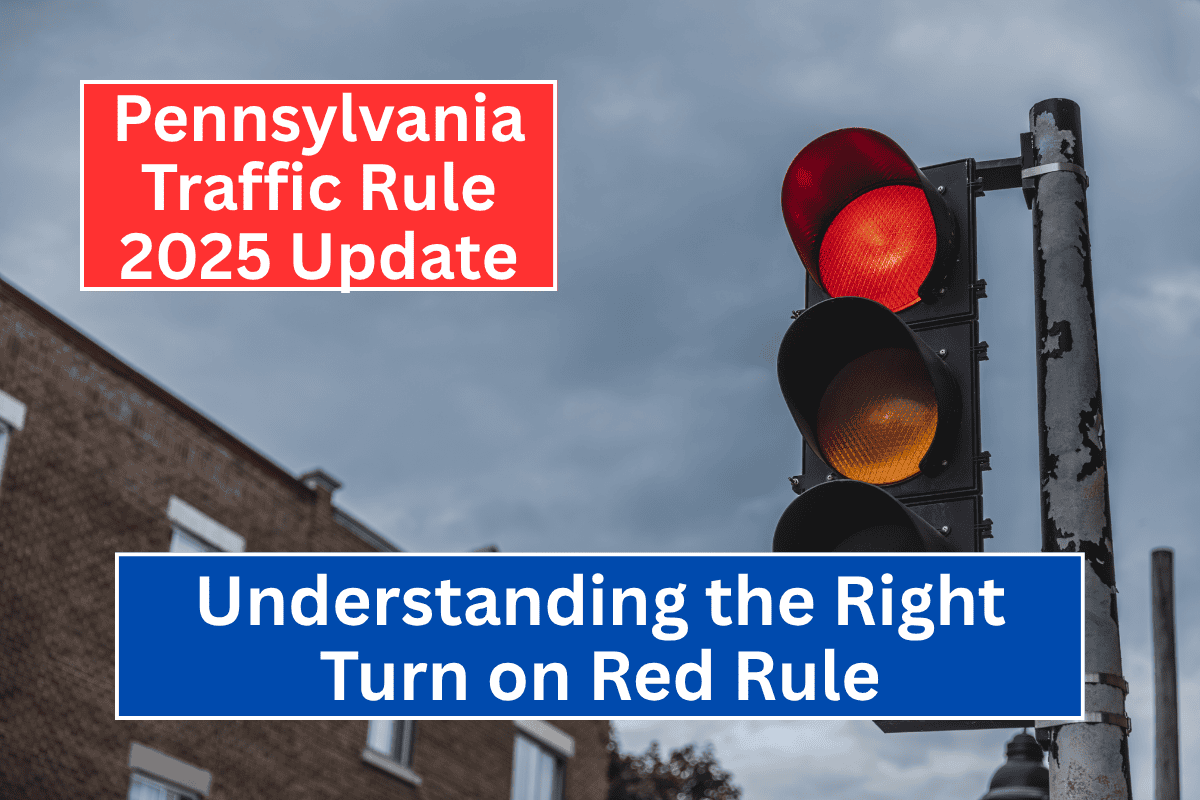A new traffic law went into effect yesterday in Pennsylvania, specifically focusing on what drivers can do at red lights. If you’ve ever experienced the frustration of waiting at a red light that doesn’t change, this new law may offer some clarity.
Our Philadelphia car accident lawyers have broken down what this new law means and how it could affect you on the road.
What Does the New Red Light Law Mean?
Under the updated Pennsylvania traffic law, drivers are now allowed to go through a red light under certain conditions. This primarily applies when the traffic light seems to be malfunctioning. For example, if a sensor that triggers the light is broken or not functioning properly, drivers are legally allowed to pass through the red light.
This law was created with motorcyclists in mind. In many cases, traffic lights use sensors embedded in the pavement to detect vehicles approaching an intersection. These sensors typically detect cars and change the light to green.
However, they often fail to recognize smaller vehicles like motorcycles, causing them to be stuck at a red light. The new law aims to resolve this issue and ensure that motorcyclists aren’t unnecessarily delayed.
Key Points of the Law
The law is designed to provide a practical solution for situations where the red light doesn’t change due to sensor malfunctions. However, there are clear conditions that must be followed before proceeding through the red light:
- Complete Stop: Drivers must come to a full stop at the red light.
- Check for Malfunction: After stopping, drivers need to verify that the light isn’t working as it should (i.e., not changing due to a sensor issue).
- Proceed with Caution: Once it’s confirmed that the light is unresponsive, drivers can proceed with caution, making sure to check for other vehicles or pedestrians before moving.
It’s important to note that this new rule is not a “free pass” to disregard red lights. The law expects drivers to follow the same safety precautions they would for any other signal malfunction.
Concerns About Safety
Some people have raised concerns about the safety of allowing drivers to pass through red lights under these circumstances. However, lawmakers have emphasized that the new law won’t lead to reckless driving. They insist that drivers should always be careful and respectful of other vehicles and pedestrians.
The law also expects drivers to apply the same care they would when encountering other types of traffic signal issues.
Another key point is that the law doesn’t specify how long a driver should wait at the red light before deciding it is unresponsive. In most cases, this new rule is expected to apply more frequently in low-traffic, rural areas where intersections are less busy. It is less likely to affect drivers in busy city areas or densely populated neighborhoods.
When Does This Law Apply?
This new rule, under House Bill 590, is expected to be most relevant in areas with low traffic volumes, particularly in rural or suburban parts of Pennsylvania. In densely populated cities or areas with heavy traffic, it’s less likely to be an issue.
The rule will mostly benefit motorcyclists who have long struggled with sensors that don’t pick up their vehicles. However, all drivers should be aware of the changes and make sure they follow the rules responsibly.
While the new Pennsylvania red light law offers a solution to a long-standing issue, it’s crucial that all drivers exercise caution. Remember, you must stop completely, ensure the light is malfunctioning, and only then proceed carefully.
The new law is not an invitation to ignore red lights, but rather a way to address sensor malfunctions safely.
If you or a loved one has been involved in a car accident at a red light or intersection, our team at Munley Law Personal Injury Attorneys is here to help. We offer free consultations and never collect a fee unless we win your case. Stay safe on the roads, and always drive responsibly.












